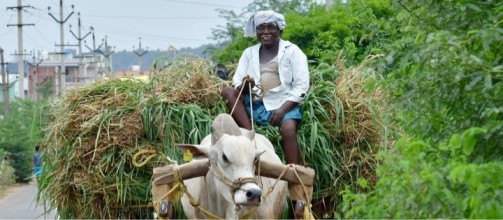Budget 2023-24 has given a boost to the animal husbandry sector. The overall budget for animal husbandry has increased by around 40 per cent (over the 2022-23 Budget Estimate) for its outstanding contribution to the nation’s socio-economic development, particularly during to the recent pandemic shock. A significant part of the total allocation went to the livestock health and disease control programme — ₹2,349.71 crore.
The allocation under the scheme witnessed an increase of 69 per cent, as the country, for the last three years, has been reeling under the effect of two deadly livestock diseases — Lumpy Skin Disease and African Swine Fever. Besides, the Budget has taken good care of the livestock sector through dedicating funds to various schemes and missions like dairy development (₹326.93 crore), Rashtriya Gokul Mission (₹600 crore), National Livestock Mission (₹410 crore), etc.
However, the feed and fodder sector, which has prime role in bolstering animal productivity, remained entirely absent from the budgetary conversation. The supply of feed and fodder has always fallen short of the aggregate demand and this gap is expected to widen in the near future. The stakeholders in the area of feed and fodder development were expecting a considerable amount to be dedicated to this segment out of this year’s allocation for the Ministry of Fisheries, Animal Husbandry, Dairying.
Research studies indicate that ensuring quality and sufficient quantity of feed and fodder have greater impact on increasing livestock productivity than breed improvement.
In India, the average yield of milk and meat is 20-60 per cent lower than the global average. The non-availability of nutritionally rich feed and fodder on a timely basis is a major issue that impinges on the productivity of farm animals in the country. Moreover, feed and fodder accounts for around 60-70 per cent share in cost of milk production. Therefore, the sector deserved special attention in budgetary allocation.
Way forward
The government can proffer support to the fodder sector through multi-pronged strategies, right from production to marketing. At the outset, all the States must be directed to dedicate sufficient amount for fodder resource development. The technical guidance from ICAR-IGFRI — a premier institute based in Jhansi — can be sought as it has developed fodder plan for various States and agro-climatic regions.
Investment is also required to ensure parallel development of supporting market environment for surplus fodder, encompassing backward and forward market linkages. Provision of dedicated market space with legal credentials will facilitate transparency and remunerative prices for fodder traders. As there exists regional and seasonal disparity in fodder production, channelising fund for establishing community fodder bank where surplus fodder can be stored as hays/silage/fodder blocks for use during scarcity would be crucial for safeguarding the interest of small dairy farmers.
As the government is set to promote start-ups and rural enterprises through Agriculture Accelerator Fund, NABARD must be directed to promote rural enterprises working in fodder space. Fodder based research organisations need to be supported for incubating fodder-based entrepreneurs.
More importantly, making India a global hub for Shree Anna (Millets) was an important thrust in the Budget. In light of this, research and promotion of dual purpose millets varieties will help in improving food security and the well-being of farmers while bridging fodder deficit to a large extent. Promoting start-ups with technical backstopping for preparing millets based cattle feed will also accentuate production of these super crops in the long run.
Source : The Hindu Businessline March 01,2023 by Choudhary and Sharma are scientists at ICAR-IGFRI, Jhansi. Views are personal

